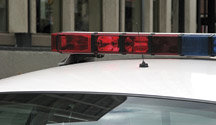Describing crime in the state’s second largest city as being in a “freefall,” Jersey City’s mayor and senior police officials held a press conference Wednesday morning to show steep drops in most categories.
Their report noted a 30.4 percent drop in robberies between 2009 and 2008, and a 15.6 percent decline in violent crimes for the same time period. Overall, non-violent crimes fell almost 20 percent, led by declines of over 25 percent in burglaries and almost 28 percent in car thefts.
Specifically, car thefts are down to 800 last year from a whopping 5,030 in 1990, and rape is down to 45 “confirmed” rapes.
See crime stats for the past 20 years at www.njjcpd.org.
________
The trends
“We thought we should underscore this good news in the middle of a new ‘Great Recession,’ “began Mayor Jerramiah Healey at the press conference inside City Hall. He appeared with Police Director Samuel Jefferson and Police Chief Thomas J. Comey.
“Too often, the media passes over stories like this because ‘Good news is no news,’ “ he said, “but the decreases we’ve seen in certain categories are phenomenal. When the numbers are proven to be double-digit drops, you have to applaud the exceptional efforts.”
Along with Jersey City’s downtown economic revival, the mayor gave credit to increased community involvement and new policing policies, along with new technology-driven patrol tactics.
Burglaries, thefts, auto thefts, assaults, robberies, arsons and rapes all fell between 10.4 percent and 30.4 percent, he said.
There were 873 robberies last year, which they said was the first time there were fewer than 1,000 incidents since the 1980s. They said FBI records say there were 1,700 robberies in 1980, eventually peaking at 2,582 cases in 1992.
Jefferson said that the decreases may send a signal to criminals to stay away. “We want perception to be reality for those who commit crimes,” Jefferson said. “The message we want to send to outsiders is, ‘Don’t do it here.’ “
Murder rate climbs
But murders remain a sticking point.
Comey said the discrepancies between the overall decline and the rising homicide rate is due to the “target-specific” nature of murders. A substantial percentage of killings are gang related, he said, caused either by disputes between gangs or executions of gang members, and sometimes other deaths result from stray bullets fired around totally innocent people.
“Many of the these killings were not surprises to us,” Comey said, “because we were aware of
the victims’ activities, which made them gang targets.”
Preventing gang-related crimes like murders requires “actionable intelligence from our state and federal partners, which we confirm with our own methods” said the chief. Anti-gang education and targeted police raids that disrupt gang activities are solutions, too.
Technology-Powered Community Policing
The new crime statistics come from COMPSTAT, JCPD’s city-wide “COMPuter STATistics” crime tracking and reporting system, implemented three and a half years ago. Chief Comey said police are using COMPSTAT analysis along with new technologies like cameras and new data-driven law enforcement tactics to be much more effective city-wide.
COMPSTAT’s monthly crime incident reports are available online at www.njjcpd.org, along with historical archives back to 1990.
The high-tech tools let the JCPD interface with state and federal law enforcement to track and report criminal activity better and to qualify for funding, Comey said.
The 2009 statistics are so good, however, that city officials worry outside funding might be cut, they said.
“We’re doing a great job and other cities just aren’t getting there yet,” observed Sam Jefferson.
